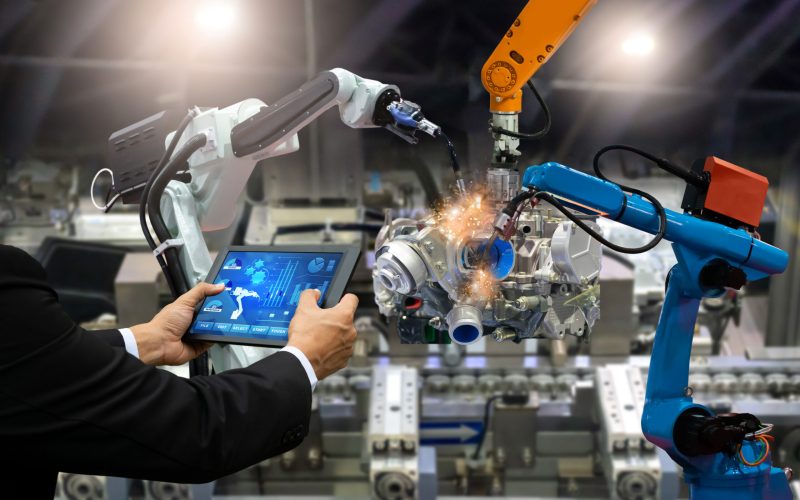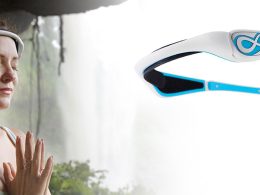In the realm of advanced robotics, one of the most transformative elements is the innovation in sensor technology. Enhanced precision in advanced robotics is now achievable thanks to the development of innovative sensors. These sensors, which are more accurate and responsive than ever before, allow robots to perform tasks with an unprecedented level of detail and exactitude. This precision is crucial in industries where even the smallest error can lead to significant issues, such as in semiconductor manufacturing or high-precision assembly lines.
Moreover, advanced robotics leverage real-time data from cutting-edge sensors, providing them with the ability to make instantaneous adjustments and decisions. This real-time data acquisition and processing enable robots to adapt to changing conditions on the fly, ensuring that they can maintain optimal performance and efficiency. The integration of these sophisticated sensors into robotic systems marks a significant leap forward in the capabilities of industrial automation.
Role of Robotics in Quality Control

Quality control is a critical aspect of industrial production, and advanced robotics play a pivotal role in ensuring consistent product quality in industries. By utilizing robots equipped with high-precision sensors and advanced algorithms, manufacturers can maintain a uniform standard of quality across all their products. This consistency is vital for maintaining brand reputation and customer satisfaction.
Furthermore, advanced robotics minimize human error in quality control processes. Human inspectors, despite their best efforts, can be prone to fatigue and oversight, leading to mistakes that may compromise product quality. Robots, on the other hand, can work tirelessly and with unwavering accuracy, significantly reducing the likelihood of errors. This reduction in human error not only enhances product quality but also streamlines the quality control process, making it more efficient and reliable.
Energy Efficiency in Robotic Systems
Energy efficiency is becoming increasingly important in industrial applications, and advanced robotics are at the forefront of this movement. These robots are designed to optimize energy use, ensuring that they operate as efficiently as possible. By employing energy-saving techniques such as regenerative braking and advanced power management systems, robots can perform their tasks while consuming less energy.
Energy-efficient designs also enhance advanced robotics’ sustainability. As industries strive to reduce their carbon footprint and adhere to environmental regulations, the adoption of energy-efficient robotic systems becomes a crucial strategy. These designs not only lower operational costs by reducing energy consumption but also contribute to a more sustainable and eco-friendly manufacturing process.
Advancements in Human-Robot Interaction
The interaction between humans and robots in industrial settings has seen significant advancements, particularly in communication protocols. Enhanced communication protocols in advanced robotics for industry applications ensure that robots can seamlessly integrate into human-centric workflows. These protocols allow for more intuitive and effective communication between human operators and robotic systems, facilitating smoother collaboration and task execution.
Improved safety measures in human-robot interaction with advanced robotics are also a key development. Robots are now equipped with sophisticated safety features, such as real-time monitoring and emergency stop mechanisms, to prevent accidents and injuries. These safety measures are essential for creating a secure working environment where humans and robots can coexist and cooperate effectively.
Scalability and Customization
One of the standout features of advanced robotics is their scalability. Advanced robotics adapt to growing industrial needs, making them an ideal solution for businesses looking to expand their operations. Whether a company is scaling up production or diversifying its product line, robotic systems can be scaled accordingly to meet the increased demand. This scalability ensures that businesses can remain agile and responsive to market changes.
Customization is another significant advantage of advanced robotics. Tailored advanced robotics solutions for specific tasks mean that robots can be designed and programmed to perform specialized functions that meet the unique requirements of different industries. This level of customization allows businesses to optimize their production processes and achieve higher efficiency and productivity.
Regulatory and Compliance Issues
As the deployment of advanced robotics in industries becomes more widespread, ensuring compliance with safety standards for advanced robotics is paramount. Regulatory bodies have established stringent safety standards that robotic systems must meet to be approved for industrial use. These standards are designed to protect workers and ensure that robotic systems operate safely and reliably.
Navigating evolving regulations for advanced robotics implementation can be challenging for businesses. As technology advances, regulations are continuously updated to address new safety concerns and technological developments. Companies must stay informed about these changes and ensure that their robotic systems remain compliant with the latest regulatory requirements. This vigilance is essential for maintaining safe and lawful operations.
Economic Implications of Robotics
The economic implications of advanced robotics in industries are profound. Economic growth driven by advanced robotics in industries is evident as businesses that adopt robotic systems often experience increased productivity and efficiency. This growth can lead to the creation of new jobs and the expansion of existing ones, contributing to overall economic development.
Cost reduction through advanced robotics implementation in manufacturing is another significant economic benefit. Robots can perform tasks more quickly and accurately than human workers, leading to reduced labor costs and higher output. Additionally, the precision and consistency of robots can minimize waste and rework, further driving down production costs. These cost savings can be reinvested into the business, fostering innovation and growth.
Training and Skill Development for Workers

As advanced robotics become more prevalent in industries, training workers to operate advanced robotics effectively is crucial. Workers need to be equipped with the knowledge and skills to interact with and manage robotic systems. Comprehensive training programs can ensure that employees are proficient in using these advanced technologies, maximizing their potential and minimizing downtime.
Skill development in AI robotics for increased productivity is also essential. By investing in the continuous development of their workforce, companies can enhance their overall productivity and efficiency. Skilled workers who understand the intricacies of robotic systems can identify and address issues more quickly, optimize workflows, and contribute to the smooth operation of industrial processes. This investment in human capital is vital for the long-term success of businesses in the age of advanced robotics.










